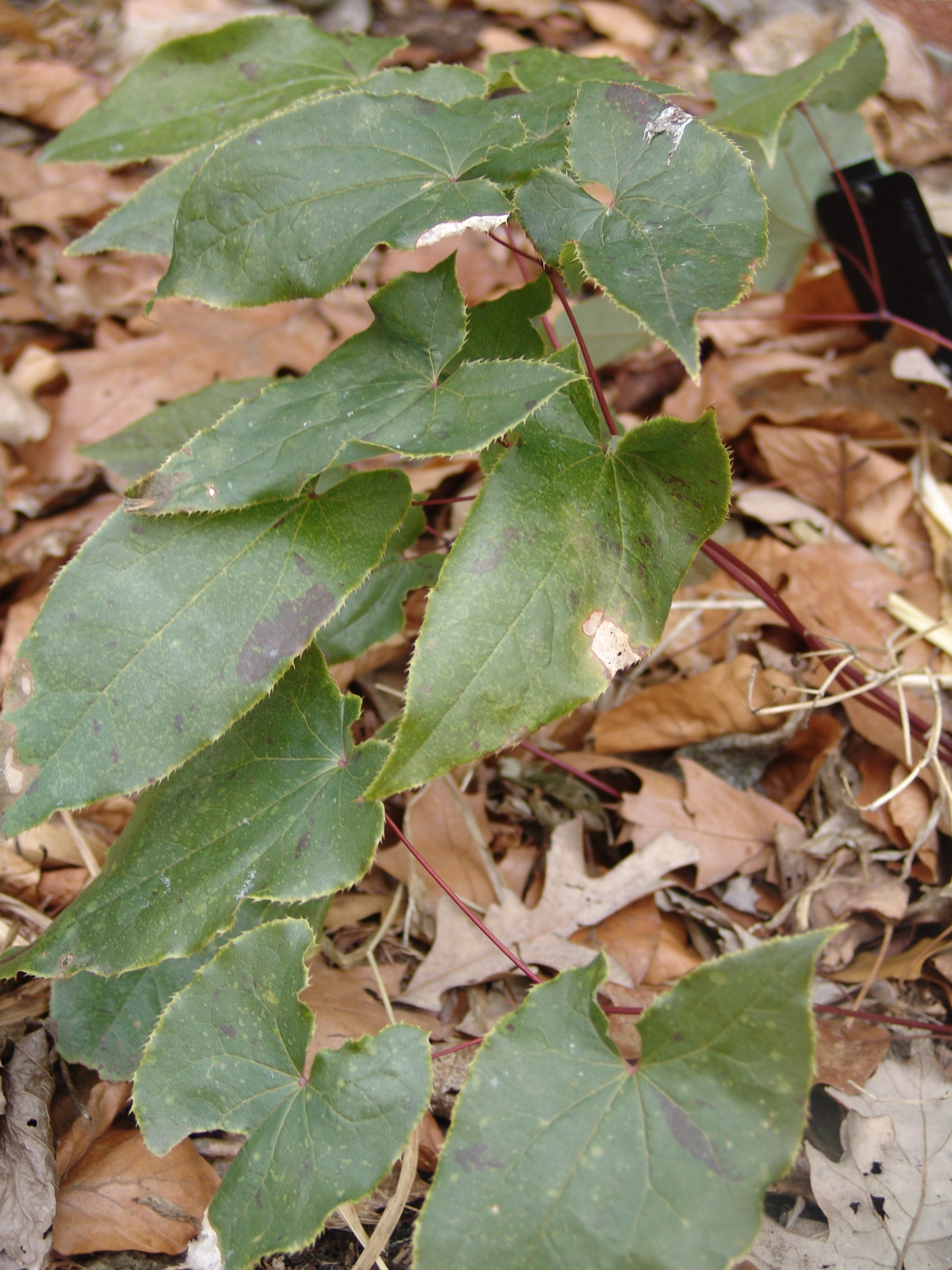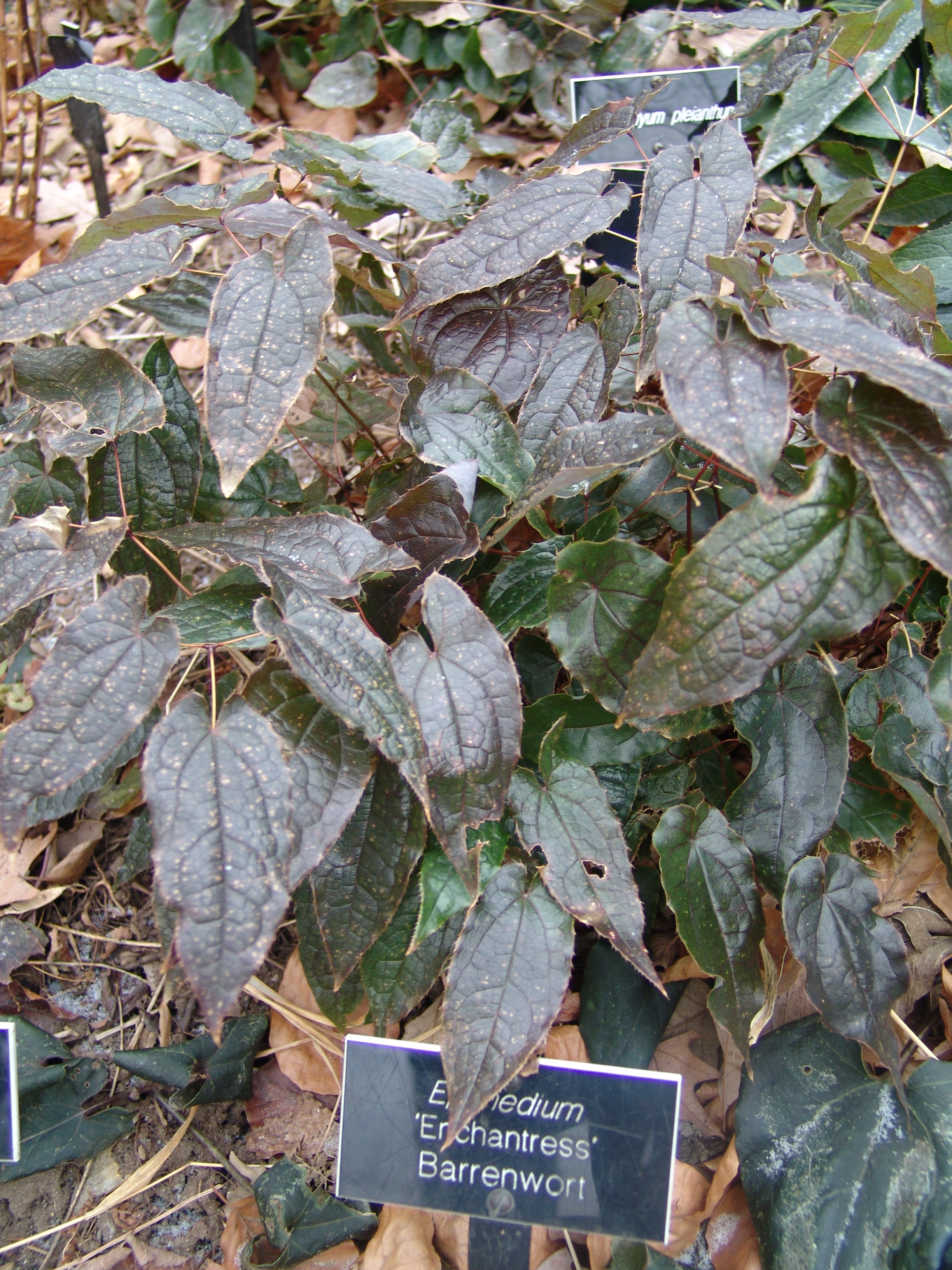Perennials in the Winter Landscape
Winter has settled in at here the Scott Arboretum. While we haven’t gotten any decent snow yet, the temperatures are dropping and the ground is pretty well frozen. This time of year I find the structure and shape of some of the Arboretum’s oldest and biggest trees to be the most striking. Walking down Magill Walk around 5:00 pm while the sun is slowly going down is a wonderful way to appreciate the allee of Quercus bicolor, swamp white oaks, and their incredible size. But what about the lower growing plants this time of year? While many perennials are planted for spring and summer blooming, there are several here at Scott that will add interest to your garden during the coldest time of the year.
In the Terry Shane Teaching Garden, there are several perennials that continue to look lovely at this time of year. Epimedium sagittatum and E. ‘Enchantress’ are two of my favorites. The foliage of E. ‘Enchantress’ continues to get shinier and more beautiful as the weather gets colder. This is a low growing, clump forming plant that gets small purple flowers in the spring. This time of year, it is notable because the older leaves are dark green and the newer ones are lighter with a red speckling. E. sagittatum has dark green glossy foliage that is much larger at up to 6 inches long. It is one of more striking Epimediums in the Terry Shane Teaching Garden right now.
Another evergreen in the Terry Shane Teaching Garden is Disporopsis pernyi. This perennial is a Chinese species known as evergreen Solomon’s seal. The leaves are long and narrow and grow on upright stems that get about two feet tall. The flowers look like little white bells and grow from the leaf axils in late spring. But this time of year, this plant’s evergreen, glossy leaves are what make it stand out. This plant grows well in a woodland garden setting in USDA zones 6-9.
How can you talk about evergreen perennials without mentioning Polystichum acrostichoides, the Christmas fern? The Christmas fern can be seen throughout the Arboretum, as well as in Crum Woods, where it remains evergreen and upright all winter long. This eastern North American native is very common and most noticeable this time of year because it remains green when so many perennials go dormant. It grows in a fountain-like clump up to two feet tall and its fronds are both evergreen and glossy, with an almost leathery appearance.
Are you interested in seeing these perennials in person or want to learn about even more perennials for the winter landscape? Join Andrew Bunting, curator of the Scott Arboretum, on a guided tour this Sunday, January 18 from 12:45-1:45. The tour will depart from the Scott Office and will be over in time for you to attend Dick Lighty’s lecture titled “Good Plants: 70 Years of Hopes, Failures, and Successes” at 2 pm in Science Center 101.







No Comments